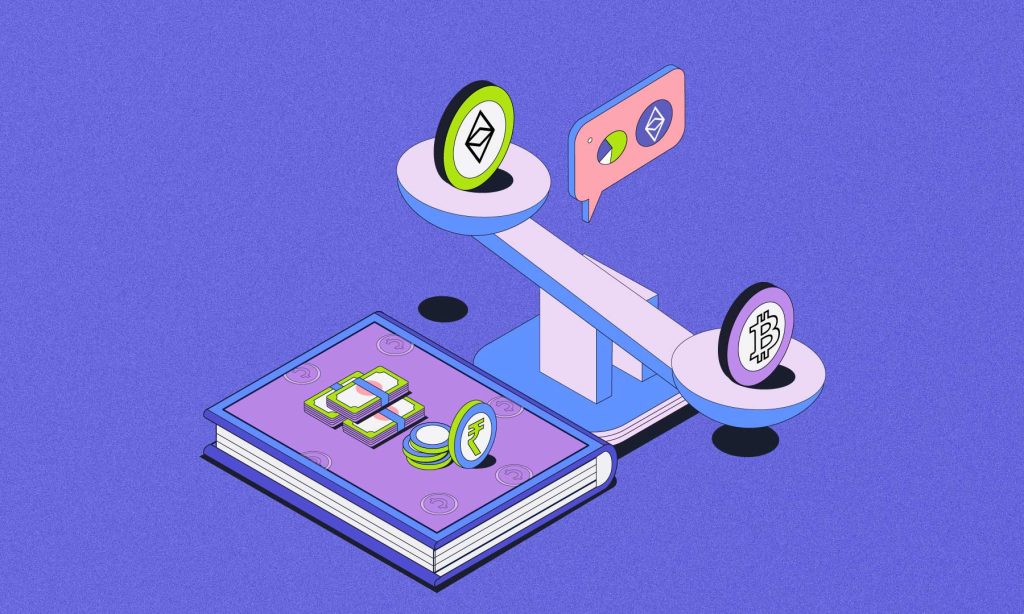Maker and taker fees are two types of trading fees that investors have to pay while trading crypto. But what specifically do they mean? And why are they called that? Learn all about these two crypto trading fees that most exchanges levy.
Crypto trading fees
Cryptocurrency trading fees are charges that exchanges impose for trading on them. The fees vary from one exchange to another. Sometimes, they can significantly impact the traders’ profit margins. The two main types of fees in cryptocurrency trading are maker fees and taker fees.
Understanding these fees will help you, as a crypto trader, make better-informed decisions that will help you maximize profits.
Market makers are traders or firms that provide liquidity by continuously placing buy and sell orders on the exchange. They make money by earning the spread, the difference between the bid and asks prices. These traders also play an important role in ensuring that the markets function efficiently and are an important component of the cryptocurrency ecosystem.
Market makers and takers
Market maker firms or individual traders play a crucial role in the crypto industry. They provide liquidity to the market, making it possible for buyers and sellers to trade crypto quickly.
The market maker individual or firm does this by buying and selling large volumes of an asset. Their intention is to seek profit from the bid–ask spread, but in the process, they create liquidity in the market.
Maker orders are essentially limit orders. That means they are not immediately executed at the market price. Instead, they are added to the order book, where other traders can fill them. The addition to the order book suggests that the trader is not immediately taking any liquidity from the market. Instead, they are providing liquidity as they make their order available for other traders to fill. The individuals who accept the orders that the makers create are called takers.
A taker, on the other hand, is someone who takes away liquidity from the market while trading.
An important aspect of market making is the maker’s coin price. The maker coin price is the price the market maker wishes to sell the crypto concerned. This price is often lower than the current market price. Because the market maker aims to profit from the bid-ask spread.
What is a maker fee, and whom does it affect?
As a trader, you must understand maker and taker fees to make the most of your trades. Let’s begin with the former. The maker fee is paid to the market maker to provide liquidity to the order book. This fee is lower than the taker fee, which applies to traders who take orders from the market makers. The higher take fee incentivizes market makers to continue providing liquidity to the market.
The maker fee is calculated as a percentage of the maker’s coin price. It varies from one exchange to another.
Maker fees apply to traders who place limited orders.
What is a taker fee, and whom does it affect?
A taker fee is a charge that exchanges impose on traders who place orders that remove liquidity from the order book. Such traders place orders that are immediately executed at the current market price. They, therefore, take some liquidity away from the market.
Taker fees are generally higher than maker fees. The higher fee incentivizes traders to add liquidity to the market. The taker fee is also calculated as a percentage of the coin price and varies from one exchange to another.
Orders that are both maker and taker orders
Orders that are both maker and taker orders are unique to the crypto market. In such orders, the trader is adding as well as removing liquidity. Thus, the fee will be a combination of both.
However, it’s crucial to remember that being a maker and taker in the same order can be a double-edged sword. If the market moves against you, you will be charged both, which can add up quickly.
Conclusion
Maker fees apply to traders who place limit orders, adding liquidity to the market. On the other hand, traders who place market orders that take liquidity from the market have to pay taker fees. Orders can sometimes be both a maker and a taker order. The fee, in this case, is usually a combination of the two fees.
Understanding maker and taker fees are crucial to making informed crypto trading decisions and maximizing profits. Traders must know the fee structures of different exchanges and choose the one that best suits their trading strategy. It is important to consider the impact of all fees on their profit margins and adjust your trading strategies accordingly.
FAQs
What is maker fee and taker fee in Crypto?
Maker fee is when you create a new trade order that doesn’t match an existing one. Taker fee is when you fill an existing order. They’re fees for trading on a platform like Coinswitch.
Do I pay both maker and taker fee?
Yes, on most platforms like Coinswitch, you pay either a maker fee or a taker fee depending on your trading action. When you create a new order, you pay the maker fee; when you fill an existing order, you pay the taker fee.
How are maker and taker fees calculated?
Maker and taker fees are usually calculated as a percentage of the trading volume. Maker fees apply when you add liquidity to the market by placing a new order that isn’t immediately matched. Taker fees apply when you remove liquidity by filling an existing order. The exact percentages vary based on the platform you’re using.
Which is better maker or taker?
It depends on your trading strategy. If you’re patient and want to set your own price, maker fees might be better. If you want a quick trade, taker fees work. Consider your goals and market conditions.








